
Codul fericirii
¥65.32
volumul al II-lea dintr-un interviu de un cristian Ce noroc a avut Genera?ia noastr?, Genera?ia ‘60, c? a fost contemporan?, c? a avut ?n mijlocul ei ?n permanen?? un artist ca Ion Cucu, un om ?n stare s? fixeze imaginea ei ?ntr-o vreme ?n care nu puteau s? r?m?n? niciun fel de alte imagini, pentru c? televiziunea era dedicat? exclusiv perechii conduc?toare, pentru c? la un moment dat nici m?car pe c?r?ile proprii nu puteau s? apar? fotografii. Dac? n-ar fi existat Cucu ?n mijlocul scriitorilor ?i dac? n-ar fi fost ?ntr-o m?sur? aproape magic? – a? zice – prieten cu ei ?i nu i-ar fi intuit, aceast? genera?ie important? a literaturii rom?ne n-ar fi existat vizual. Nu s-ar fi ?tiut cum eram. R?sfoind albumul lui, concluzia mea e c? eram frumo?i. Senza?ia e c? ne f?cea mai frumo?i dec?t eram. ?ntotdeauna c?nd v?d o fotografie a mea f?cut? de Ion Cucu, m? ?ntreb ?oare chiar a?a ar?tam ?n realitate?“. Senza?ia este c? prietenia cu care ne privea f?cea s? ap?rem mai frumo?i. (Ana Blandiana)

Din mansarda lui Cioran
¥57.14
Deopotriv? cronica vivant? a tranzi?iei, aide-memoire, jurnal ?i anti-jurnal, foileton pamflet, addenda, Pe muchie de h?rtie ??i propune o radiografiere a st?rii literaturii rom?ne de azi, folosind ?n permanen?? oglinda retrovizoare."Tipic, scrie despre autoare Constantin C?lin, ?n critica actual?, e, cel mai adesea, s? coexi?ti, s? superi c?t mai pu?in? lume, s? te rezemi de grup, s? te pliezi pe ideile celor mai bine plasa?i ?n ierarhie, s? fii amuzant ca un comis-voiajor, s? te adaptezi la orice "canon", s? te aranjezi cu oricine. Atipic a devenit s? ?ncerci s? spui adev?rul integral, s? nu ui?i, s? nu fii la?, s? nu fii oportunist."

Amurgul zeilor. 2012, calendarul maya? ?i ?ntoarcerea extratere?trilor
¥48.97
Selec?ia de cronici literare ?i recenzii care urmeaz?, propune o imagine a practicii literare la cap?tul lungii nop?i totalitare. Un raft cu c?r?i salvate de un cititor de pe margine, obi?nuit cu spectacolul tranzi?iei, tentat ?n bun? parte de acest spectacol, dar legat de catargul unei cor?bii in deriv?… Gheorghe Mocu?a
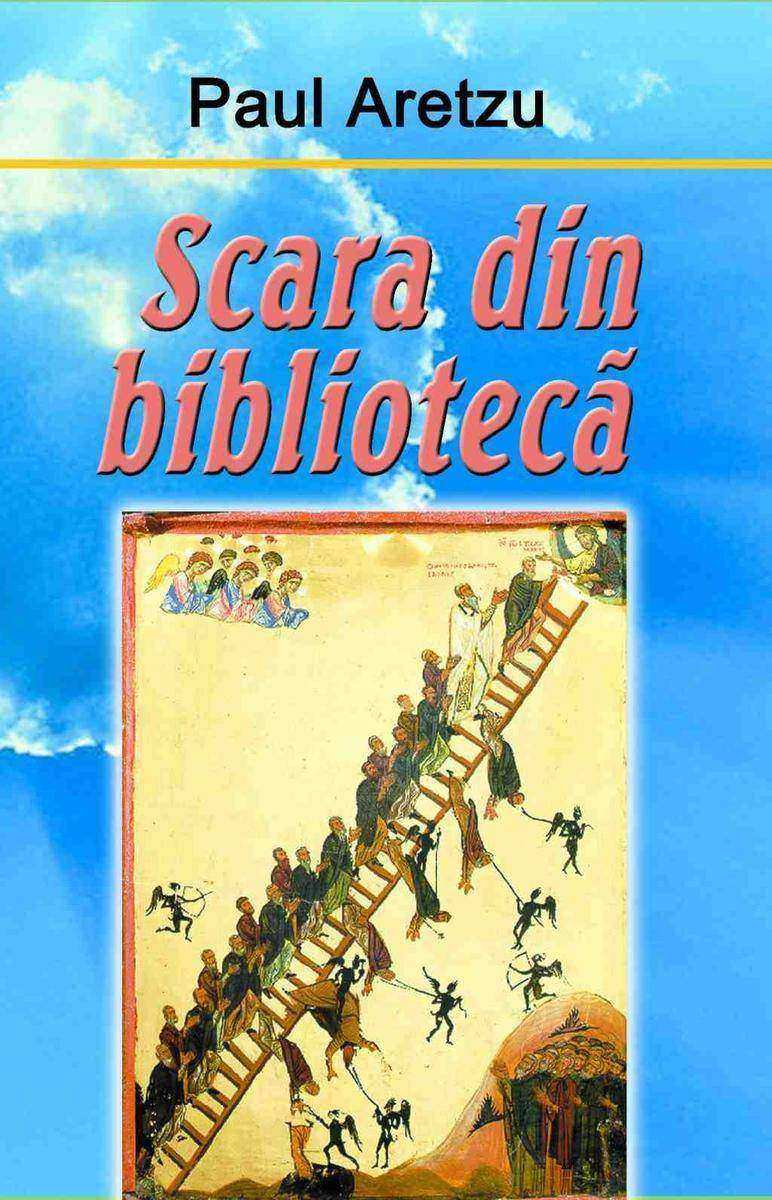
Scara din bibliotec?
¥65.32
Problema fiinei romneti nu s-a rezolvat. Dei ea a reprezentat o mistic a ntregii generaii, motivaia principal a existenei acesteia, datorita conflictului dintre Occident si Orient, dintre cele dou doctrine sociale fundamentale, datorit Cortinei de Fier care a czut la finele celui de-al doilea rzboi mondial, care a separat lumea n dou lagre etane, problema a rmas nerezolvat. Ce a nsemnat de fapt problema fiinei romneti Conturarea unei identiti naionale, obsesie a naionalismului romnesc interbelic i a tinerei generaii“ care s-a confundat mai mult sau mai puin cu aceast epoc. Utopia generaiei a fost aceea de a scoate Romnia din anonimat. Totul a rmas la nivelul iluziei i al scepticismului. Din ntreaga generaie care a supravieuit exilului intern sau extern, doi reprezentani fideli ai acesteia au conturat prin preocuprile lor foarte bine ideea fiinei romneti sau mai bine zis modalitatea ei de manifestare n lume. Acetia sunt Cioran i Noica. Aceast carte – dreapt, radical, exact, ntunecat – trateaz rtcirile i mplinirile acestora n contextul n care ntregul continent, n perioada interbelic, prea ca a luat-o razna.“ – Mara Magda Maftei

Paranormalitatea. De ce vedem lucruri inexistente
¥65.32
Mai presus de observaiile strlucite risipite pe parcursul analizelor romanelor lui N. Breban, de siturile pertinente, de sigurana tonului i ingeniozitatea cailor de abordare, ne ispitete n acest studiu figura spiritului creator ntrezrit de M.V. Buciu n atitudinea prozatorului fa de dubla opresiune, a codului ideologic i a scriiturii, deopotriv alienante. Cum autorul este, el nsui, prozator, teza manifest un interes special pentru o anumit specie de luciditate creatoare care recunoate sau cunoate limitele scriiturii i i alege contient forma de alienare. Ea trdeaz admiraia fa de un destin exemplar i, poate, un vis de transvazare, fapt care i explic tensiunea participativ a frazelor.“ – Eugen Negrici.E un rezultat spectaculos al aplicrii unui sistem unitar de interpretare, combinnd n proporii adecvate teoria i analiza. (...) Noiunile-cheie se potrivesc n broasca textului, deschis astfel interpretrii ntr-un mod expert, fr a utiliza peraclul impresionismului.“ – Ion Simu.Refuzndu-i conformarea la tradiiile autohtone ale reveriei impresioniste n marginea textului i a re-citirii rnd cu rnd, n faa publicului, autorul a procedat n maniera unui universitar american: nzuin a randamentului maxim, redundana minim, livrare extrem-modernizat a demersului critic ctre utilizator, o atmosfer de document informatic, cu elaborare asistat de calculator. Abordarea e complet problematizat, iar cartea e contruita n sistem fagure: celulele, odat stabilite prin identificarea i delimitarea problemelor relevante, au fost umplute compact cu pasta informaiei i analizei.“ – Nicolae Brna.Sunt sigur c Marian Victor Buciu va deveni, n urmtorii zece ani, autorul unei opere.“ – Mircea Ciobanu, 1993.mi place judecata Dvs., rapid, adnc, cu acces, a zice instinctiv, la abstract.“ – Nicolae Breban.Subtil, rafinat, erudit, Marian Victor Buciu este probabil cel mai european critic din Romnia.“ – Dumitru epeneag.

Oh My God! ?n 6 s?pt?m?ni. Sl?be?te rapid ?i uime?te-?i prietenii
¥57.14
Cucamonga este o carte de avangard?, experimental?, care cuprinde texte din zonele poeziei, prozei ?i filozofiei. Cele cinci capitole ale c?r?ii s?nt urm?toarele:1) Best Sailor. Este un poem ?n proz?, polemic ?i critic la adresa societ??ii de consum ?i a pie?ei de carte dominate de bestselleruri. Arm?tura fiec?ruia dintre cele ?apte capitole ale acestui poem este alc?tuit? din scurte descrieri ale c?r?ilor prezente ?n topurile de v?nz?ri din Statele Unite ale Americii, topuri publicate ?n revista The New York Times Book Review (nr. 11 din 24 martie 2008). Unul dintre personajele cele mai sonore care apar ?n acest text este Barack Obama.Best Sailor este probabil singurul poem din lume cu bibliografie (lista cuprinde ?n jur de 100 de c?r?i).2) 19 pove?ti despre orice. Este un capitol care cuprinde 19 poeme scrise ?n registre diferite, fiecare fiind despre ceva anume: Despre visele unora pl?tite de al?ii; Despre importan?a ficu?ilor ?n via?a c?l?torilor; Despre pas?rea care ??i ia zborul din om; Despre pescuitul alternativ; Despre cum se pleac? ?n luna de miere; Despre cum ajunge privirea s? vad?; Despre orbirea vorbirii; Despre pompierul care ??i incendia ?ig?rile; Despre rolul menghinei ?n deprinderea tehnicii zborului; Despre legile rescrise ale ospitalit??ii termodinamice; Despre c?l?toria p?m?ntului ?n jurul omului; Despre mor?i numai de bine; Despre teorema pesc?ru?ului cu cap de lup; Despre fatalitatea de a urm?ri ?tirile la televizor; Despre anatomia valurilor; Despre garderoba incandescent? a lui Dumnezeu; Despre con?inutul de metal al picioarelor; Despre lumina care ne calc? pe urme; Despre categoriile aristotelice ale liniei orizontului. Ultimele cinci poeme-pove?ti au la baz? c?te o ipotez? ?tiin?ific? ?i s?nt scrise ?ntr-o manier? inovatoare.3) Iubita mea vitreg? ?i 4) Unul dintre domni?oara W ?i doamna Kuttare s?nt dou? poeme ?n proz?, cu personaje ?i ?nt?mpl?ri stranii. (Aceste poeme s?nt relu?ri din c?r?i mai vechi, ap?rute ?n urm? cu 8-9 ani.)5) Demonadologia este o lucrare de filozofie, o scurt? introducere ?n metafizica r?ului, alc?tuit? din 90 de paragrafe, care parodiaz? Monadologia, celebrul tratat de metafizic? al lui G. W. Leibniz. Monadei leibniziene i-a fost aici substituit? demonada, ?n locul lui Dumnezeu apare Demonezeu, iar cea mai bun? dintre lumile posibile a fost ?nlocuit? de cea mai rea dintre lumile posibile. De?i trateaz? despre principiile care stau la baza r?ului din lume, Demonadologia se ?ncheie ?ntr-o not? optimist?, cu happy-end.

Proz? scurt? cu postludii
¥24.44
...Lng zid sttea btrnul, demnul btrn al dimineilor mele. Zidul se continua neted dintr-o cldire, a unui spital poate, cci printr-o ferestruic de la subsol, zbrelit, zream n etajere maldre de cearafuri i de-acolo venea un abur sur i uneori barbotarea unor voci. ns btrnul sttea mai ncolo, lng zid: scund, destul de bine mbrcat pentru o asemenea vreme, cu palton i cciul cu margini, ca la vreo aptezeci de ani, nu mai mult, totdeauna n picioare, foarte lng zi, cu minile n buzunare. Am spus c btrnul era scund, ns lat n umeri, dar aa mi se prea mie, pentru c dura mult timp pn ce treceam de el. Uneori i ddeam un leu. Alteori nu. Plecam de acas i tiam c btrnul va fi acolo, lng zid – rareori se ntmpla s lipseasc, l-am vzut acolo doi ani la rnd, adic dou ierni la rnd, cci numai iarna i fcea apariia, n zori, niciodat dup ce se lumina bine de ziu – i niciodat nu tiam, pn n ultimul moment, dac am s-i dau sau nu moneda. Numai n ultima clip scoteam mna din buzunar (era mai mult o aciune pe cont propriu a braului), iar el, atent i prompt, ntindea mna i i strecuram n palm bnuul.“

O s? m? ?tii de undeva
¥48.97
Cum se vede orbirea. ?ntr-o colec?ie de eseuri ?n care studiul biografic se ?mbin? p?n? la indistinc?ie cu fic?iunea, Julián Fuks face o incursiune puternic subiectiv? ?n via?a ?i opera a trei dintre cei mai cunoscu?i scriitori ai secolului XX. Inova?ia ?n literatur? nu este singurul punct comun al celor trei biografii, cel asupra c?ruia Fucks se va opri fiind orbirea, ca incident care ?i va afecta pe to?i. Trecerea de la lumea perceput? cu toate cele cinci sim?uri la universul ?n care culorile sunt proiec?ii ale min?ii ?i vagi amintiri difer? de la un autor la altul, iar Fucks va descrie ?i completa prin propria imagina?ie creatoare felul ?n care Borges, Jo?o Cabral ?i Joyce – deveni?i personaje – aleg s?-?i gestioneze limitele senzoriale.

Logica elefan?ilor
¥48.97
M? numesc Valeriu Mircea Popa. M-am n?scut ?n 4 octombrie 1947. Eu ?i fratele meu Sorin (un matematician de elit?) suntem a patra genera?ie de intelectuali din familie. O familie de prin Ardeal.?n via?a de acum am fost (?i poate ?nc? mai sunt) golan, student, muzician (chitar? clasic? ?i instrumentul indian numit sitar), textier, fum?tor, afemeiat, b?utor de vodc?, culturist, defectolog, logoped ?i psihoterapeut ?n ?coli speciale, practicant de karate, contrabandist, marochiner, poet, ?ngrijitor de b?tr?ni ?ntr-un Altenheim din Germania, tat?, cre?tin gnostic, lector universitar, doctor ?n psihologia artei, t?mplar, designer de bijuterii, gravor, bijutier.De o vreme ?ncoace am impresia c? sunt un nimeni.Nu vreau s? ?tiu ce am fost ?n vie?ile anterioare.

Din coresponden?a lui Descartes
¥40.79
Trebuie spus c ghinga pe nelesul tuturor e i el un volum de construcie. Se vede de la poziionarea la nceput i la final a dou texte pn la capt/ la capt. Nu doar prin abilitatea cu care l structureaz, Coman d impresia unei poete exersate ndelung nainte de a-i propune s debuteze, ci prin modul impecabil n care i concepe fiecare text n parte. Dac vei cuta bjbieli, construcii ntmpltoare, falsete, balast (inerente unui volum de debut), v asigur ca nu le vei gsi aici. Coman reuete s construiasc o lume credibil cu o voce feminin care, dei pare s opteasc, strig. Este o carte care exploateaz jocul de contraste, nuannd: abia dup cel de-al doilea copil al nostru/ am neles ca sunt chestiuni/ perfect distincte – dragostea (am/ putea tri foarte bine/ ca fraii) i plcerea./ pentru amndoi plcerea a venit/ de la corpul strin. n-a mai rmas dect dragostea./ o vom duce cum se cuvine pn la capt. Unei poetici feminine viscerale cu artificii retorice, Coman i opune ceea ce muli ar punea vedea drept o extirpare a afectivitii. Vorbim de dedublare: niciodat n-am ncetat s-mi vorbesc/ altfel dect unei femei/ dar astzi am depit orice nchipuire./ astzi cnd tocmai reuisem/ s-mi adorm trupul/ iar tensiunea dintre mine i el/ aproape c se risipise i de depersonalizare: ntr-un loc n care se aud tot mai tare/ copiii/ cineva m numete nina./ am 40 de ani/ i nu vreau s-mi mai beau cafeaua cu un mort. Vorbim de existen domestica printre oale, robinet, frigider, paa hasan, adjectiv, de hiperchinezie dublat de deficien de concentare, dar i de oboseal cronica (nu m odihnesc niciodat) i acuitate perceptiv, de pnd (ciulesc urechile). O figur care pare c folosete prospecia ca terapie: voi schimba ceva la pr, mi voi/ cumpra ciorapi verzi./ voi zugrvi buctria. mi voi/ face timp s corectez teancurile cu lucrri./ voi mbtrni pentru a cdea, de fapt, imediat n blazare. Pe aceste schimbri brute de direcie, fr a fi disonante, ci perfect muzicale, Coman mizeaz i iese pe deplin ctigtoare.“ – Ioana Dunea
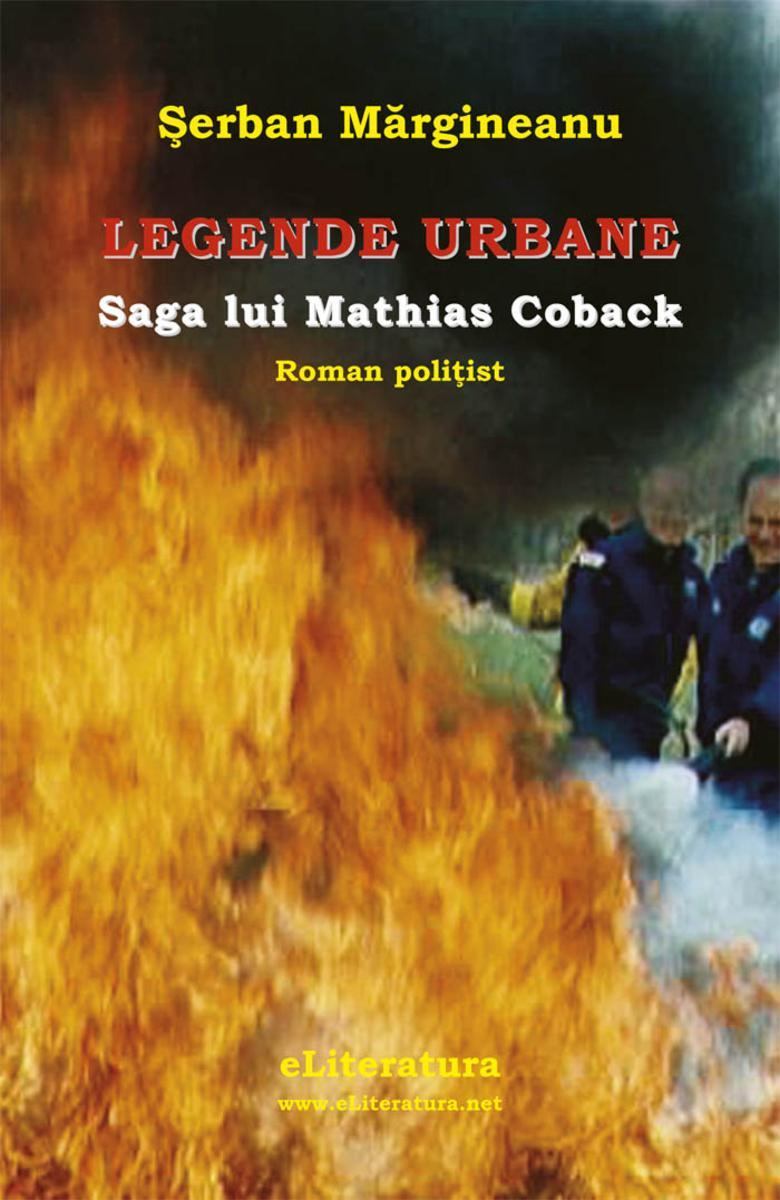
Legende urbane. Saga lui Mathias Coback
¥40.79
O poezie de o stranietate izbitoare, o lume postapocaliptic cldit pe datele unui imediat nstrinat. O poezie rece, tioas, ritmat (ritmul i aduce aportul formal la respectiva stranietate) care pune n dialog un Eu bntuit de moarte, pe care o citete, o palpeaz n toate detaliile unui univers cvasimitologic pe care-l construiete tocmai pentru a o putea circumscrie. Eul acesta al lui Kemény se afl ntr-o continu stare de asediu pe care o transfer asupra cititorului ideal adoptnd de multe ori structura narativ a mitului, a povestirii legendare (...)Materia are o greutate sufocant n poemele lui Kemény, contrastnd parc cu imaginile aflate n continu micare i transformare. Un vag suprarealism care aduce oarecum, vizual, cu acele videoclipuri ale anilor ’90 trzii, care mizau, pentru a obine stranietatea, pe ocul dat de alternarea dintre accelerarea brusc a micrii i aspectul static al temei mitologice (m gndesc n special la Metallica, clipul de la Until it sleeps)Un volum excelent, un adevrat manual de poezie care sun, datorit lui Andrei Dósa, impecabil.“ – Bogdan Alexandru Stanescu
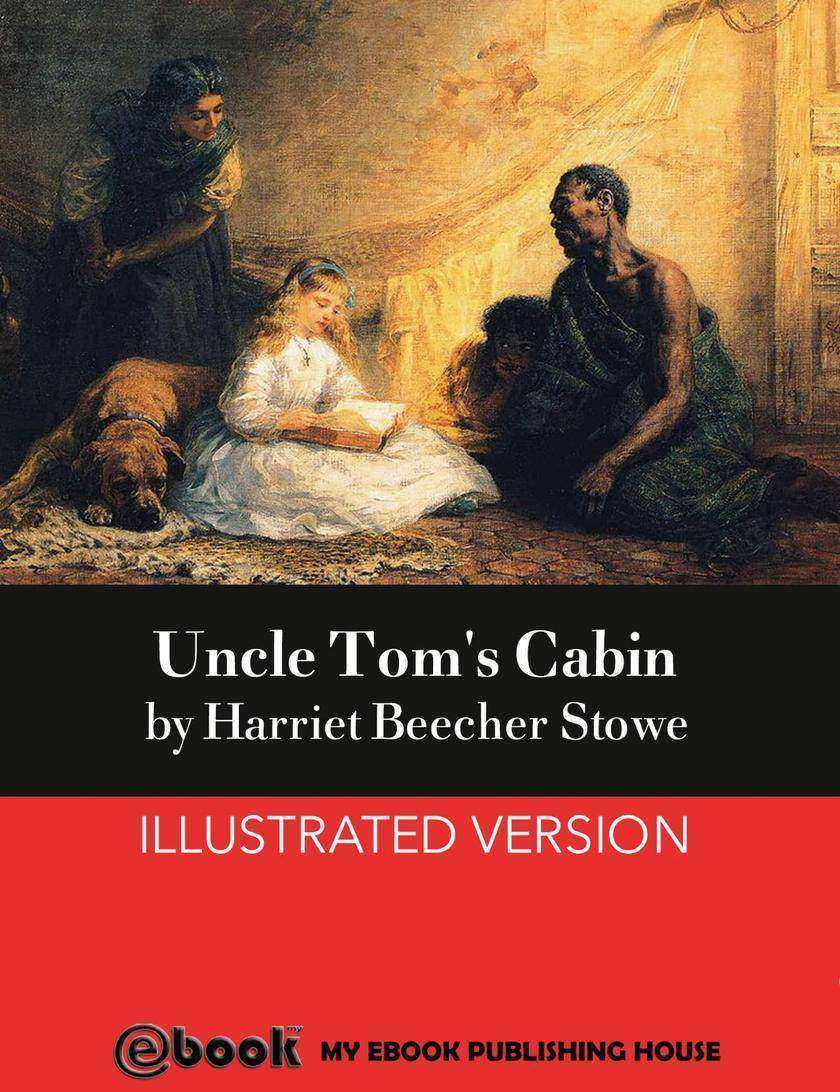
Uncle Tom's Cabin
¥8.09
Eram ?n Her?str?u, la parcul de distrac?ii, ?Luna-parc“, cum i se spunea pe atunci, ?ase b?ie?i ?i o fat?: Vintil? Iv?nceanu, Virgil Mazilescu, Daniel Turcea, Mihai Teclu, George Almosnino, Iulian Neac?u ?i Nora Iuga. Infatua?ii, arogan?ii, scandalagii, cosmopoli?ii – ONIRICII. B?ie?ii trecuser? un pic de dou?zeci, ?fata“ trecuse bini?or de treizeci, important era c? nu se vedea. Ne d?deam ?n ma?inu?e; caramboluri ?i chiote! Pe urm?, la bere, Pur?i – a?a ?i spuneam eu lui Vintil? – se ia de Iulian: ?Da’ neagra ta, cum ?i zice, dactilografa de noapte, te mai viziteaz??“... ?i urechea mea p?lnie se f?cu ?i la dou? noaptea, la ma?ina mea, am b?tut eu mai departe ce-mi dicta ea. (Nora Iuga, iulie 2010)

Doamna Ataturk
¥81.67
Cartea aceasta reprezint o confesiune sincer despre tririle, sentimentele, nvmintele i convingerile mele. Am depnat aici amintiri din ntreaga mea via, cu bune i cu mai puin bune, cu frumoase i mai puin frumoase. Dragostea, acest sentiment minunat, este cea care mi-a ghidat destinul, ncepnd cu dragostea pentru prini, apoi cu cea pentru alesul inimii, continund cu dragostea pentru copii, pentru familia toat, pentru oameni n general i, alturi de toate acestea, dragostea pentru cntec.“ Maria Dragomiroiu
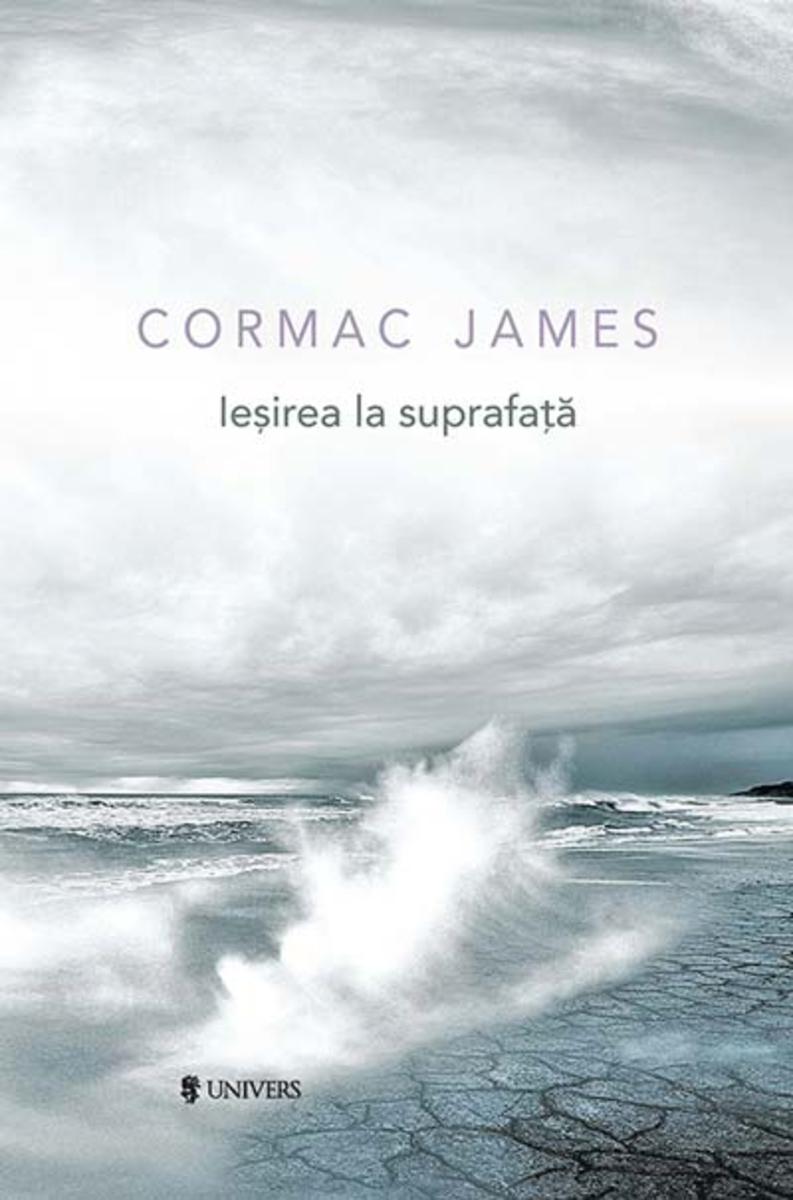
Ie?irea la suprafa??
¥106.19
Critic? literar? Editura ALLFA inaugureaz? seria de volume ?Eminescu, poem cu poem”, care va cuprinde ?ntreaga oper? poetic? antum? a marelui poet analizat? de scriitorul ?i criticul literar Alex. ?tef?nescu. Lucrarea ?Eminescu, poem cu poem. C?lin (file din poveste)” ne dezva?? de toate vechile obiceiuri de interpretare care au prezentat ?n limbaj de lemn poezia eminescian?. Alex. ?tef?nescu ne face din nou cuno?tin??, de data aceasta ?n cuvinte simple ?i idei proaspete, cu una dintre cele mai cunoscute poezii din literatura rom?n?. Analiza sa cuprinde observa?ii fresh ?i referin?e culturale pe gustul elevilor, tinerilor ?i iubitorilor de literatur? care (re)descoper? ast?zi poezia eminescian?. C?lin, ?voinicul” din basmele populare rom?ne?ti, ?i face o vizit? nocturn?, neanun?at?, fetei de ?mp?rat. Alex. ?tef?nescu scoate ?n eviden?? capacitatea poetului de a p?stra ritmul, de a nu precipita relatarea, de?i evenimentele se precipit?. Marii poe?i ai lumii, Homer ?i Dante, st?p?neau acelea?i mijloace. Mai mult dec?t at?t, o dezvoltare calm? a ideilor, cu toate nuan??rile necesare, se reg?se?te ?i ?n interiorul replicilor personajelor lui Shakespeare. Un mare scriitor ?tie c? spectacolul existen?ei este mai important dec?t succesul sau insuccesul ?ntreprinderilor omene?ti. Volumul cuprinde poemul ?C?lin (file din poveste)” ?nso?it de textul critic al lui Alex. ?tef?nescu.

Jocurile Daniei
¥0.01
Cartea de fa surprinde momente de libertate, arcuiri de libertate, zvcniri libere, explozii spre frumos, notate n fragmente lirice. n esen ei ncape i mulumirea pentru aceste momente, pentru minunea coninut n ele. Iar bucuriei acestei liberti i dau o orientare n sus i spre rsrit, c mrturisire i c recunotina pentru putin de a o fi trit-o.Din punct de vedere muzical, poeziile se acordeaz i cu muzica pe care o interpretez i studiez – muzica psaltic – prelund multe din elementele ntlnite n acest gen muzical. sub aspectul formei, n multe situaii am pstrat varianta cea mai brut, considernd c pstreaz cel mai bine culoarea momentului poeziei.“ –Cristian Boro
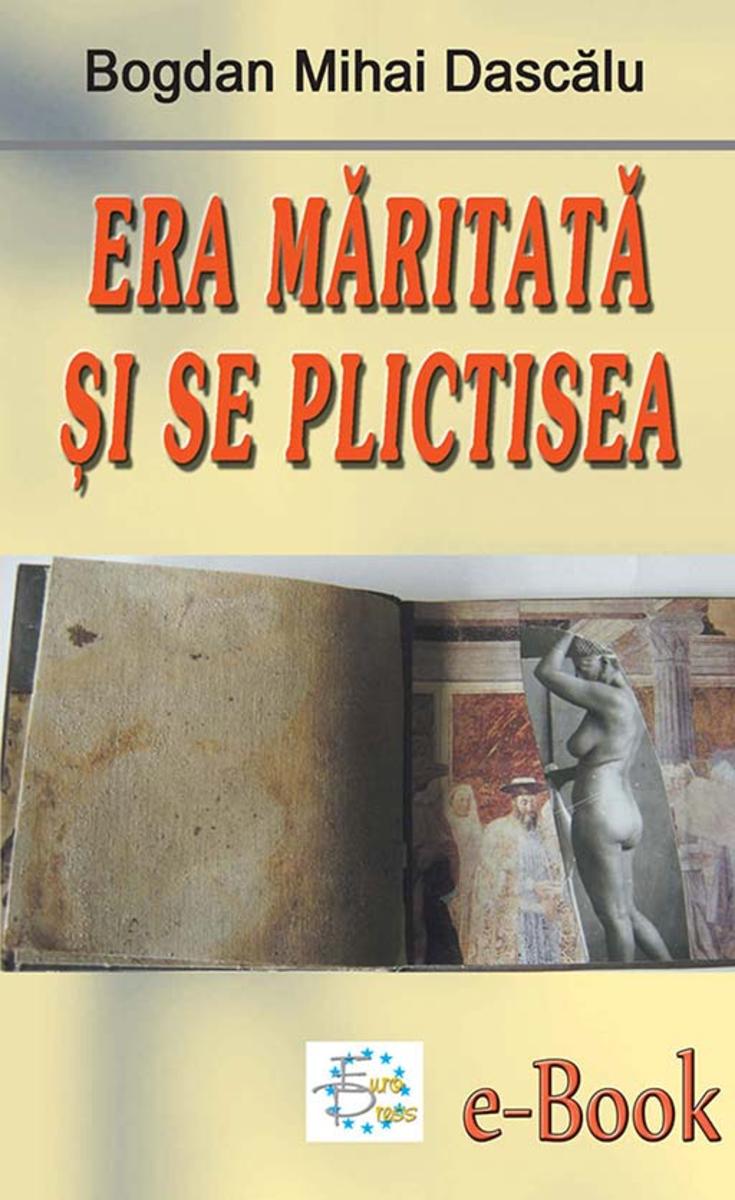
Era m?ritat? ?i se plicitisea
¥32.62
Nicolae Breban este stpnit de – i ajunge s stpneasc el nsui – voina de putere creatoare. Creaia este, dup Fr. Nietzsche, adevrata voin de putere. Ct pot crea – att exist“, iat relaia definitorie i poate chiar sensul vieii, raliat adnc unei ontologii a artei literare. Scriitorul se teme cel mai mult de insuficiena voinei. ntotdeauna a fost ngrozit de un succes de mna a doua. Un succes a fost faptul c n Frana i-au fost publicate romane dificile“, ntr-un context literar i istoric defavorabil. (…) Breban triete cu luciditate abisal; vis estetic“. Urmeaz, aadar, i nu contrazice autonomia esteticului. Omul i cultura sunt artificioase, nu naturale. El crede c, n esen, literatura nu s-a schimbat niciodat de la Homer ncoace.“ (Marian Victor Buciu) Un romancier pentru o generaie a literaturii. Nici un prozator romn nu a trit, dup 1960, o evoluie att de rapid. Succesul fulgertor al lui Nicolae Breban nu poate i nici nu trebuie s fie judecat independent de momentul 1965 al literaturii tinere. O generaie de povestitori i de poei avea nevoie de un adevrat romancier pentru a-i consacra, aa cum se cuvine, strlucirea. Nu de un romancier fcut prin aglomerarea povestirilor, strlucitor pe fiecare pagin, spectaculos prin fiecare personaj al su; generaia reclam nu un autor care tie s povesteasc, ci un scriitor nzestrat cu vocaie de romancier: de adevrat constructor.“ (Cornel Ungureanu)

A Vénusz-rejtély
¥28.78
Ormai Norbert Kossuth Lajos mellett szolgált, s remek meggy?z?képességével ?tezer vadászkatonát állított a szabadságharcba. Gyorsan t?rt el?re, az 1848 júliusában még hadnagyi rangban szolgáló Ormait tíz hónap múlva már ezredessé léptették el?, Kossuth kinevezte a honvéd vadászezredek f?felügyel?jévé. Pár nappal azután, miután visszavonult és lemondott beosztásáról, császári fogságba esett, majd a hadbírósági tárgyalása napján kivégezték.Az egykori ezredes életét és halálát máig legendák ?vezik. Sokan, még a neves t?rténészek is, minden komolyabb utánajárás nélkül nevezték Ormait szélhámosnak. E kiadvány számos ponton tisztázza az Ormaival kapcsolatos félreértéseket, torzításokat, és megpróbál hiteles adatok, valamint eredeti okmányok k?zlésével hozzájárulni pályaívének teljesebb megrajzolásához.

Ion Iano?i - 80
¥65.32
Raporturile dintre cuvinte i confer poemelor sale conotaii metafizice derulate ntr-o muzic enigmatic a linitii i tcerii, fiecare cuvnt scris avnd parc viaa i destinul su (ca n poemele uruguaienei Delmira Agustini), brodnd misterioase asociaii greu de tradus chiar n limba romn, ceea ce m-a determinat s le las s zburde singure, citndu-le deseori pe acelea crora nu le-am gsit corespondentul n dicionarul meu srac n sinonime.Poemele Alinei Beiu-Deliu au o densitate i un dramatism care refuz tiparele obinuite ale feminitii, fiind ncrcate de un lirism convulsiv care explodeaza deseori cu farmecul spontaneitii imediate, alteori cu delicateea i fragilitatea disimulrilor, care printr-un inexplicabil algoritm, dezvluie mai mult dect acoper mesajul poetic, crend o atmosfer grav de filigran incomprehensibil la prima lectur, dar care se limpezete treptat, pe msura repetrii, n toat splendoarea, obligndu-l pe cititor s se ntrebe, n final, dac singurtatea poetei este o simpl izolare sau o form de aprare a libertii sale ctigate prin suferin.“ (Valeriu Cuner)

R?zboaiele PSI. O istorie a manipul?rii min?ii
¥57.14
Cartea se adreseaz? elevilor, studen?ilor, precum ?i publicului larg de cititori, monografia ?n cauz? – semnat? de marele c?rturar Ion Iano?i, membru al Academiei Rom?ne – constituind una dintre lucr?rile de v?rf despre uria?ul romancier de la Iasnaia Poliana.

Vasco da Gama navigheaz?
¥40.79
Parodicul nu este doar unul dintre modurile comice; el este rezultatul variatelor ncercri pe care literatura le face spre a se rennoi prin autonegare. Asumndu-i acest rol, literatura parodic are luciditatea de a-i etala mecanismul auto-producerii, analizndu-i exagerrile, dar i constitutivele convenii. Aceast ntoarcere spre literaritatea literaturii pe care mizeaz orice demers parodic este camuflat prin aparena orientare spre diferii autori, texte sau stiluri. Orice parodist este, simultan, explorator prin textele altora, dar i autorul ce-i analizeaz lucid teritoriul propriului text. Una dintre aceste dou dimensiuni poate fi dominant ntr-o parodie, oscilaiile fiind generate att de parodist, ct i de contextul estetic cruia acesta i aparine. Dac, n mod normal, principiile critice urmeaz dezvoltrii formelor literare, discursul parodic este un discurs critic contient deghizat n form literar sau un discurs literar cu finalitate critic. Vorbim de parodia studiat estetic i nu de parodia ca simpl deformare, comis din ignoran.“ O fenomenologie a parodicului din Evul Mediu, epoc modern i postmodern, aceast carte ofer i analiza parodicului n operele unor scriitori ca Urmuz, Caragiale, Crtrescu .a.

Királyok vagy zsarnokok?: ?gyfélpanasz 2.0
¥116.33
Végh Sándor életútja tbb mint teljes volt. Miután letette a vonót egy végtelenül gazdag hegeds pálya után, ahol univerzális egyéniségét a legnagyobb mértékben és a legsokoldalúbban tudta kifejezni, a Camerata Academica élén tapasztalatai sszegzése mellett olyan megújulásnak voltunk a tanúi, amely párját ritkítja.” - Várjon Dénes. Száz esztendeje született a 20. század egyik legkiemelkedbb, világszerte ismert és elismert magyar eladómvésze, Végh Sándor. A ktet a centenárium alkalmából állít emléket a muzsikusnak, aki egy személyben volt hegedmvész, kvartettprimárius, karmester és pedagógus. Lwenberg Dániel végigkíséri a trténelmi okokból viharos, mvészi szempontból roppant változatos és termékeny életutat. A ktet ismerteti a mvész életrajzát, de a legnagyobb súlyt szakmai tevékenységére és zenei rkségére helyezi.




 购物车
购物车 个人中心
个人中心



